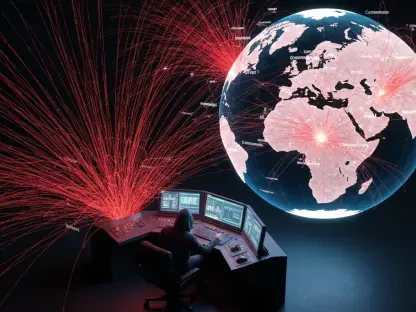China has initiated a groundbreaking shift in the computing landscape with the introduction of a space-based edge computing constellation. This move signifies a crucial development in the realm of global data processing, leveraging the principles of edge computing beyond Earth’s confines. Known as the “Three-Body Computing Constellation,” this initiative by Guoxing Aerospace is poised to revolutionize numerous industries by enhancing real-time data processing capabilities.
Overview of the Space-Based Computing Industry
The space-based computing industry currently stands at the forefront of technological innovation, driven by advancements in data processing and the rising need for efficient global communication networks. This sector encompasses a wide array of applications, from satellite operations and telecommunications to defense and environmental monitoring. Key players in the industry include not only established aerospace companies but also emerging tech startups, all influenced by rapid technological progress and intricate regulatory frameworks. In this domain, the crucial significance lies in employing satellites and edge computing to streamline data transfer and analysis, optimizing various industry operations.
Trends and Opportunities in Space-Based Edge Computing
Key Trends Shaping the Industry
A prominent trend within the space-based edge computing sector is the shift toward decentralizing data processing tasks to optimize resource use and reduce latency. As organizations aim to manage vast amounts of data more effectively, the demand for distributed computing networks is rising. The incorporation of edge computing principles allows for processing data closer to its origin, leading to enhanced efficiency and sustainability. Emerging technologies, such as artificial intelligence and quantum computing, are playing a transformative role in this field, creating immense opportunities for growth and innovation.
Market Projections and Future Outlook
Looking ahead, space-based edge computing is expected to witness substantial growth, with market projections indicating a robust expansion trajectory. The increasing reliance on AI-driven systems and the demand for instant data processing are significant drivers of this growth. Performance indicators suggest a marked increase in deployment of edge computing solutions within the next few years, fostering a new era of decentralized data management. As this trend gains momentum, the industry anticipates further technological advancements and increased adoption across various sectors.
Challenges in the Space-Based Edge Computing Sector
Despite its promising outlook, the space-based edge computing sector faces several challenges. Technological complexities, such as ensuring reliable communication networks and the miniaturization of advanced computing hardware, remain notable hurdles. Industry players must also navigate stringent regulatory landscapes, which can impede swift technological adoption. To overcome these barriers, collaborative efforts among stakeholders, including government bodies and tech firms, are essential for developing standardized practices and fostering innovation.
Regulatory Environment and Compliance Considerations
The regulatory environment governing space-based edge computing is characterized by comprehensive laws and standards designed to ensure safety and security. Compliance considerations extend beyond national boundaries, necessitating international cooperation and adherence to globally recognized frameworks. As data sovereignty issues become more pronounced, the emphasis on security measures and data governance grows. Industry participants must stay abreast of regulatory changes and adapt their practices accordingly to maintain compliance and safeguard data integrity.
The Future of Space-Based Edge Computing
The future of space-based edge computing heralds transformative changes that will redefine data processing and dissemination on a global scale. Technological advancements will continue to drive innovation, with potential disruptors emerging from AI, machine learning, and Internet of Things (IoT) applications in space. Consumer preferences are increasingly leaning toward faster, more reliable data access, propelling the demand for edge computing solutions. Moreover, global economic conditions and regulatory dynamics will shape the industry’s evolution, compelling stakeholders to prioritize agile and adaptive strategies.
Conclusion and Recommendations
The Three-Body Computing Constellation has revolutionized data processing landscapes, introducing new methodologies and concepts that bridge Earth and space. Those involved in this pioneering field seized upon the chance to redefine operational strategies, relying on autonomous and sustainable approaches to data management. China, through this ambitious initiative, set a precedent for future endeavors, inviting other nations to follow suit in embracing space-based computing. As industries continue to navigate the complexities of regulation and technological innovation, remaining adaptable to evolving conditions will be critical in securing sustainable growth and maintaining competitiveness in this dynamic field.









